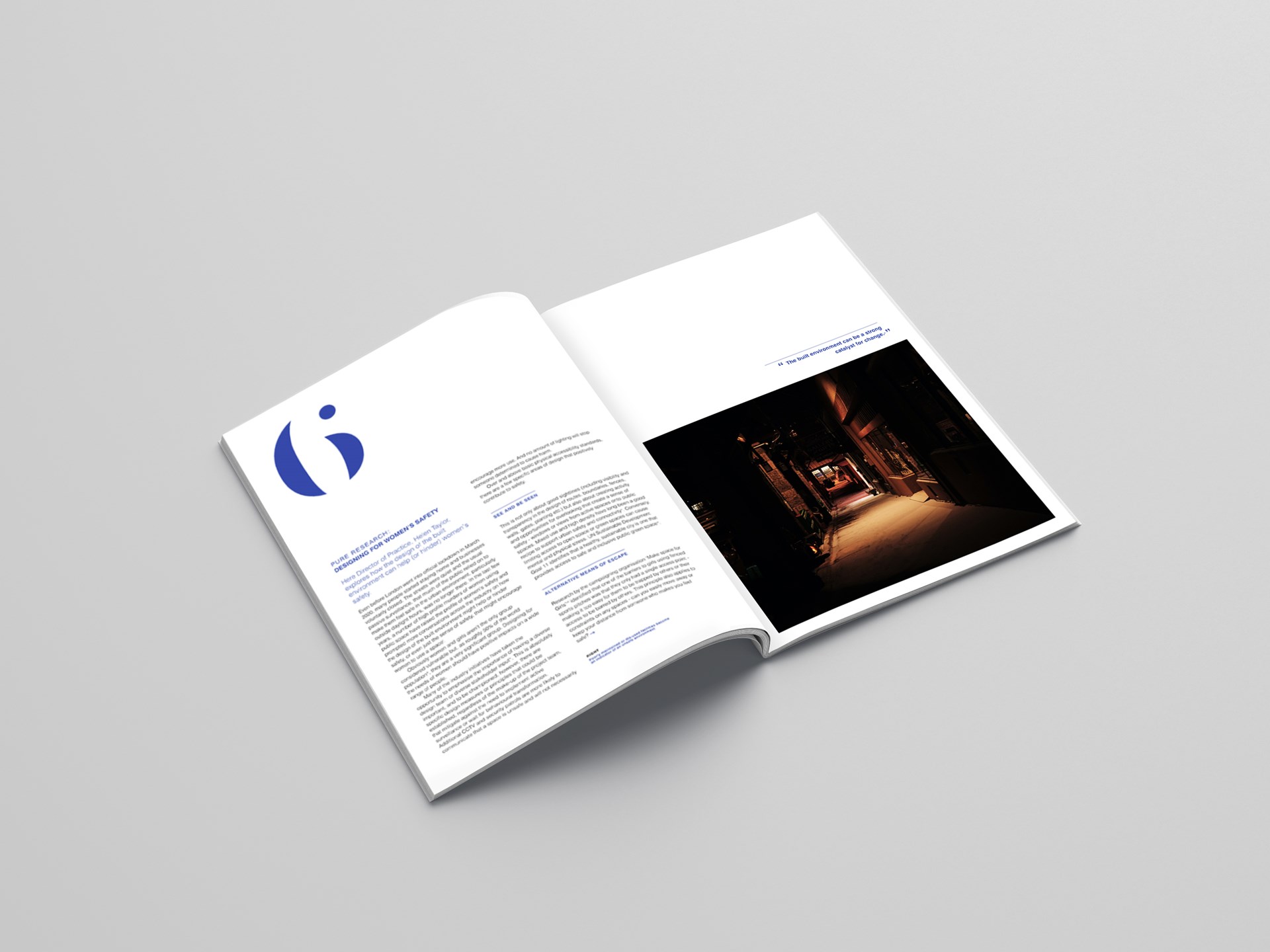Designing for Women's Safety



Here Director of Practice, Helen Taylor, explores how the design of the built environment can help (or hinder) women’s safety.
Even before London went into official lockdown in March 2020, many people started staying home and businesses voluntarily closed. The streets were quiet and the usual passive surveillance, that much of the public relied on to make them feel safe in the urban environment, particularly outside daylight hours, was no longer there. In the last few years, a number of high profile murders of women using public space have raised the profile of women’s safety and prompted more conversations across the industry on how the design of the built environment might help or hinder safety, or even just the sense of safety, that might encourage women to use a space.
Obviously women and girls aren’t the only group considered vulnerable but, as roughly 50% of the world population, they are a very significant group. Designing for the needs of women should have positive impacts on a wide range of people.
"The built environment can be a strong catalyst for change."
Many of the industry initiatives have taken the opportunity to emphasise the importance of having a diverse design team or diverse stakeholder inputiv. This is absolutely important, and to be championed, however, there are specific design measures or principles that could be established, regardless of the make-up of the project team, that mitigate against the need to implement active surveillance or wait for behavioural transformation.
Additional CCTV and security patrols are more likely to communicate that a space is unsafe and will not necessarily encourage more use. And no amount of lighting will stop someone determined to cause harm.
Over and above basic physical accessibility standards, there are a few specific areas of design that positively contribute to safety.

This is one that is most commonly cited in surveys but it doesn’t mean that a standardised light level needs to be applied in every single space. Making sure that the lighting is attractive, appropriate and well maintained makes an enormous difference.
"Often, conversations around women’s safety in public centre on the risk of sexual assault. But that’s not the sole concern - and taking a broader view of public safety can be one of the best ways to achieve more women-friendly streets"
Perhaps not always thought of as a safety, rather than a public health issue, but something that has a significant impact on women’s safety - particularly in countries with poor sanitation infrastructure. Women and girls are disproportionately affected, and exclude themselves from spaces, due to a lack of access to toilets. The 2021 London Plan recognises that provision of safe public toilets is a critical part of our social infrastructure.

“Safety in numbers” rings true in this context - a well-designed, inclusive space will be more appealing and more likely to be used, and therefore it will feel safer. Green space and good quality play space for children and young people also increases this perception of safety. Robust, resilient and popular facilities are more likely to be well maintained. Poorly maintained or dis-used facilities become an indicator of an unsafe environment.

Whether due to lack of usage, dedicated facilities, road names, statues or otherwise, reinforces the perception that these spaces are not for women and girls. In a time when we need to re-build community and positive social relationships, the design of our built environments can contribute to breaking down these barriers. This is a complex topicx but these five principles offer a simple starting point - a “women’s safety framework” that could be applied to, or used to review, any design proposal or existing environment. A safer environment will have a positive social, environmental and economic impact for all of us - not just for individual women and girls.
---
London’s Urban Development Sector Unites to Make Our Streets Safer for Women and Girls (n:d) Publica [online] https://publica.co.uk/cic-launch/
Designing Safe Cities for Women (2017) Smart Cities Dive [online] https://www.smartcitiesdive.com/ex/sustainablecitiescollective/designing-safe-cities-women/1052876/
Population, female (% of total population) (2021) The World Bank [online] https://data.worldbank.org/indicator/SP.POP.TOTL.FE.ZS
Design cities to work better for women, says a new report by Arup, University of Liverpool and UN Development Programme (UNDP) (2022) United Nations Development Programme [online] https://www.undp.org/press-releases/design-cities-work-better-women-says-new-report-arup-university-liverpool-and-un-development-programme-undp
Transforming planning and design – how can we create safe places for women? (2021) Mace [online] https://www.macegroup.com/perspectives/210415-can-we-create-safe-places-for-women
Designing safe cities for women: The green space, gender, safety nexus in London (2021) University College London [online] https://blogs.ucl.ac.uk/dpublog/2021/03/18/designing-safe-cities-for-women-the-green-space-gender-safety-nexus-in-london/
Make Space for Girls campaigns for facilities and public spaces for teenage girls (2021) Make Space for Girls [online] https://makespaceforgirls.co.uk/
BBC Business Daily (2021) Why toilets matter [Podcast] 19 November 2021 Available at: https://www.bbc.co.uk/sounds/play/w3ct1j14
The London Plan 2021 (2021) Greater London Authority [online] https://www.london.gov.uk/programmes-strategies/planning/london-plan/new-london-plan/london-plan-2021
Gender Inclusion and Women's Safety (2022) Publica [online] https://publica.co.uk/projects-gender-inclusion-and-womens-safety/
Candiracci, S. and Power, K. (2022) Cities Alive: Designing Cities That Work for Women. ARUP [online] https://www.undp.org/publications/cities-alive-designing-cities-work-women